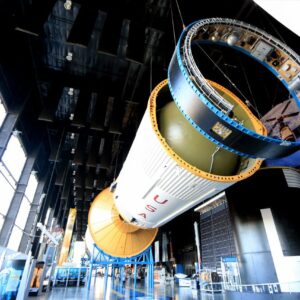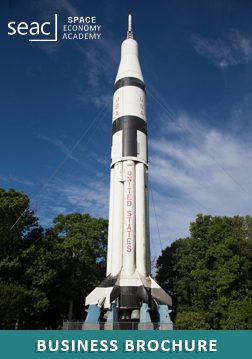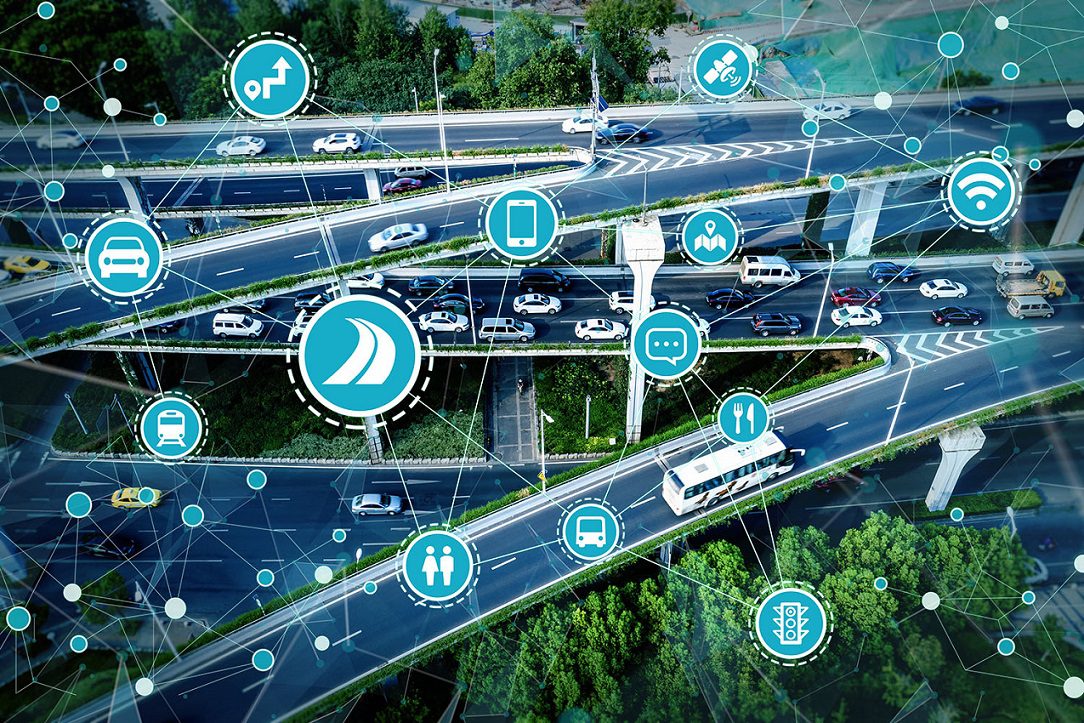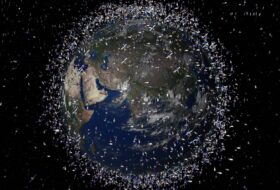Author: Gerarda de Pasquale
GNSS positioning is based on exact physic/mathematical models, [1]. The algorithms and the models perform very well in terms of the availability and accuracy of positioning, navigation and time (PNT), and can reach centimeters level of accuracy under good signal conditions, [2]. Unfortunately, the assumptions at the based of these models, are not always true and several errors can impact the overall GNSS performance. Namely, the Ionospheric effect, multipath propagation, spoofing and jamming interferences and GNSS-denied environments. For these reasons, Artificial intelligence (AI) and in particular Machine Learning (ML) could play a crucial role in Global Navigation Satellite System (GNSS positioning)
Indeed, ML derives a model based on data and it can be applied for phenomena which is difficult to derive a model by explicit laws of physics/math and for phenomena with high complexity, time variance and nonlinearity.
The use of machine learning to facilitate the errors mitigation and localization started from the early 2000s. In the literature several researches and analysis are present, and they have been conducted to understand the benefits and the limits of applications of ML in GNSS use cases.
Different researches are focused to mitigate and/or detect multipath and NLOS (non-line-of-sight) in GNSS receiver as in [3], [4], [5] and [6].
In [3], to detect the multipath in the GNSS signals, raw data from the receiver correlator output are used to train the ML
To extract the important features and patterns from such data, a deep convolutional neural network (CNN) is used, which have proven to be efficient in image analysis in particular. To take advantage of CNN, the correlator output signal is mapped as a 2D input image and fed to the convolutional layers of a neural network. The network automatically extracts the relevant features from the input samples and proceeds with the multipath detection.
In [4], a study was conducted to show the effeteness of the machine learning approaches in GNSS positioning. To distinguish the received GPS signal types, namely LOS, multipath and NLOS, several features extracted from raw measurements are used: 1) received signal strength, 2) change rate of RSS, 3) pseudorange residue and 4) difference between delta pseudorange and pseudorange rate. The classification accuracy using the feature of pseudorange residue is less than 50%. In deep urban canyon, the number of NLOS and multipath could be more than that of LOS in a single epoch data. It results in the pseudorange residue cannot be a distinct feature to classify the types of GNSS received signal. The change rate of RSS can successfully separate clean and biased measurement, but has no capability to separate multipath and NLOS. The classification results using the rest two features can achieve more than 65%. Using both the first and last features, the classificaction accuracy will achieve about 75%
If all the features are used to train the classifier, then still about 75% of accuracy is achieved. So, it can be concluded that “rawer” are the measurements used to train the classifier and better are the performance. And, adding two additional features, the classification accuracy doesn’t improve. One limitation of this approach is that the classifier, developed for this study, can only be applied to static applications.
In [5], as in [3], the features of the shape of the multi-correlator are used to discriminate the NLOS multipath. Two supervised learning methods, a support vector machine (SVM) and a neural network (NN) are implemented, and their performance are compared.
In the SVM, the three features of the shape of the multi-correlator output are extracted. In the NN, the multi-correlator output is used directly as input for the NN to construct the NLOS classifier. The performance of the SVM and the NN are also compared with a traditional SVM method based only on SNR (signal-to-noise ratio). Using the SNR threshold, the classification accuracy was worse than the that of the other tests. In contrast, SVM and NN show high classification accuracy, LOS and NLOS could be identified without any problem. This suggests that the proposed method has sufficient
generalization performance. Comparing the results of NN and SVM, the performance of NN was slightly higher. This result suggests that the NLOS features extracted by NN using the signal correlation values directly were more effective than the NLOS features designed by humans. But, in terms of the computational cost, an NN has a higher computational cost than an SVM.
In [6], the ML is used to improve the GNSS shadow matching is a mapping aided (3DMA) GNSS. The 3D model can be used to effectively simulate the GNSS signal transmission in urban areas, and so to identify multipath and NLOS. The shadow matching technique compares the visible GNSS satellites, from the hypothesized locations on 3D map, with the measurements, classified by received signal strength. In the paper, the shadow matching is integrated with a proposed SVM LOS/NLOS classifier and a robust SPP (single point positioning). The classification based on the signal strength of satellites is not sufficient to classifier the NLOS. The satellite with high SNR value is more likely to be considered as the LOS satellite. However, surrounding buildings, with facades made of materials likes steel and glass, increase the reflected signal strength, making the classification based on SNR insufficient. Therefore, several features for training are used: SNR, Normalized Pseudorange Residual (NPR), Elevation Angle (EA) and Pseudorange Rate Consistency (PRC). For the training stage, these features of all locations are sorted into a random ordering, labelled by the surrounding 3D building model and the ground truth.
The robust estimator has an improved positioning accuracy and the classification rate of SVM classification can reach 91.5% in urban scenarios. But an important issue is related to satellites with ultra-high or low elevation angles and satellites near the building boundary that are very likely to be misclassified. Furth more, different kind of GNSS receiver has its unique setting like bandwidth, antenna gain and satellite constellation, which make features of the same signal variously. Therefore, the model of classification should be trained for each receiver.
Further researches, instead, have been focused on the use of ML to improve integrated navigation systems, [7] and [8]. Especially for Unmanned Aerial Vehicle (UAV) and autonomous navigating vehicle, the localization accuracy in urban becomes an important issue for safety. The precise accuracy cannot be guarantee by GNSS only. The GNSS localization solution suffers a large error by the multipath effect. Therefore, it is necessary to integrate various sensors to make up for the weakness of GNSS and to estimate accurate position of the vehicles.
In [7], a deep learning technique to predict the position of the vehicle based on multisensors data including GNSS is applied. To support accurate positioning, many different types of sensors are combined. The positioning filter algorithm to integrate sensor data requires an analytical model for each specific sensor. Increasing the number of sesnors used, the complexity of the filter increases. In the paper, the deep learning technique is used to estimate the position of the vehicle without redesigning the analytical model of each individual sensor with constraints is developed. The Deep Learning algorithm improve the positioning accuracy of about 40% compared to GNSS-only navigation. But the study still needs to be elaborated to incorporate sensors with more features as input data. Since the current experiment is slightly limited in the amount as well as the pattern of data (for example, data acquisition on the same trajectory), it is necessary to conduct the experiment in real road situations with enormous training data.
In [8], the study develops an adaptive Kalman filter adjusting the weighting between GNSS and INS measurements for different circumstance.
Each sensor has a different performance in different areas. Inertial sensors seem to perform stably in most areas. But the MEMS-INS suffers from drift and is highly affected by the random noise caused by the temperature variations. For GNSS, the data receiving frequency is low and may subject to outages when process positioning, also the short-term noise is high, but it is stable during a long term and relatively accurate.
Due to these complementary aspects between GNSS and INS, it is effective to integrate these navigation systems for positioning and achieve higher precision localization performance. The Kalman filter (KF) is widely employed to integrate GNSS and INS, and its performance are strictly related to the process noise covariance and measurement noise covariance. To achieve optimal performance, KF requires to adjust the weighting between GNSS and INS. Constant covariance values are not suitable. In this study, a supervised machine learning model classification is used to adjust the weighting between GNSS and INS. In particular, based on the prediction, the supervised ML determines the measurement noise covariance value and further adjusts the weighting between GNSS and INS during integration. The future of standard deviation of horizontal positioning error, standard deviation of vertical positioning error, number of satellites for positioning and GPS noise are related to the GNSS health condition, and are used into supervised machine learning features. The proposed adaptive Kalman filter for GNSS/INS integration of UAV platform can effectively identify the GNSS error conditions with multipath effect, and improve the localization result for UAV, which help the UAV applications ensure the safety for urban operations.
Another GNSS vulnerability that could take advance of ML is the GNSS signal spoofing. In the literature, few researches are presented on use of the Support Vector Machines (SVM) for detection of GNSS signal spoofing, [9]. Especially in Safety of Life applications, it is important that the system is aware of using hazardous misleading information in generating Position-Velocity-Timing (PVT) solution. The monitoring of the cross-correlation among all the available GNSS observables and measurements is proposed in this paper as a method of detecting the presence of the spoofing signal.
In a GNSS receiver, signal acquisition and tracking can be severely impacted by strong scintillation, resulting in GNSS performance degradation in accuracy and continuity. ML algorithms can be also employed for the detection of scintillation. In [10], a new methodology is proposed for the detection of ionospheric scintillation events based on Machine Learning techniques applied to GNSS data.
The classical approaches for the automatic detection of ionospheric scintillation events in GNSS receivers may require an additional human effort to refine the detection results by means of a manual inspection of the events, which is expensive and time consuming. The proposed method is based on Decision Trees algorithms, and aims at overcoming the limitation of the classical approaches by identifying scintillation events “as if” done by a human operator through visual inspection.
The proposed solution aims at performing a more accurate remote on-site analysis, dropping useless data while properly storing scintillation-affected data, thus reducing the total storage usage. In this paper the raw GNSS signal measurements at the correlator output of the receiver tracking stage are used as features. The following set of features has been selected: the in-phase correlator output squared and averaged over the observation window; the quadra-phase correlator output squared averaged over the observation window; the signal intensity squared and averaged over the observation window; the phase scintillation index.
The use of elevation and azimuth, provided by any GNSS scintillation monitoring receiver, is discouraged, as they are location and time dependent.
All the aforementioned researches present some challenges: the proposed supervised machine learning model can occur some mis-classification cases due to the lower classification accuracy of data training (as in the cases where the SNR is used), the algorithms are based on post-processing rather than real-time operation, they are limited to a specific user motion, the data used to train the classifier are not representative enough for the general applications cases.
Each city in the world is different, buildings and trees can affect the GNSS measurements in different ways making difficult to create a good train model for the supervised machine learning and applicable for a general user case. A deep learning approach could be preferred, since the trained model of DL is completely data-driven but at the other hand, an extensive and conclusive data is needed.
ESA itself is supporting, through fundings of ESA’s NAVISP programs [11], the development of application that use AI to improve the positioning accuracy and reliability. Although the positive prospects of the utilization of ML in GNSSs, in the market, there are few applications that exploit AI in the field of navigation.
oneNav is the only Mobile GNSS receiver on the market that uses a Pure L5 wideband receive chain, and enhances urban canyon performance with artificial intelligence. The oneNav enhanced measurements are processed by a cloud connected Navigation Engine that uses advanced AI/ML techniques to further improve navigation accuracy.
The Navigation Engine uses sophisticated ML techniques to predict if the received signal is Line of Sight (LOS), and predict the measurement error caused by multipath. These techniques require the extra information contained in the CIR (Channel Impulse Response) and the correlation function from the oneNav measurement engine. Combined with data from building models, the propagation model of the urban canyon can be learned and used to resolve multipath and improve positioning accuracy.
ADVA has launched a centralized GNSS monitoring and assurance tool that uses artificial intelligence (AI) and machine learning (ML) for comprehensive predictive maintenance. Using AI and ML to analyze the entire synchronization network, the centralized GNSS monitoring and assurance solution is resilient to GNSS cyber issues, such as jamming and spoofing attack. In such that, to remotely identify issues and protect networks, the new customer-owned tool enables users to collect and analyze huge amounts of information from across the network.
In February, Apple applied to the Federal Communications Commission for to a license to install GPS testing equipment on its headquarters campus. This may be related to an application filed by Apple Inc. with the U.S. Patent Office in August 2019, which describes the company’s “Machine Learning Assisted Satellite Based Positioning.”
Based on the previous researches, taking in account the challenges of ML in GNSS navigation, the best application that exploits ML to improve GNSS positioning, should rely on data measurements as “rawer” as possible, the data should not be time and location dependent and should be not depended on the characteristics of the device used to collect the data. In case a full and completely data set is available, a deep learning approach could be the most suitable approach.
Therefore, an application less susceptible to miss classification could be an application that focuses on a limited market/area, where an extensive and conclusive data, to train the machine, is already available. An ideal application could be a multisensors positioning with machine learning for robot navigation in specific locations as in farms, open and indoor warehouses, national parks, ecc. The unmanned ground vehicle can easily navigate through the integration of GNSS and different sensor measurements, as well as a camera data that captures surrounding real-time environment and streams it to an object recognition algorithm.
Using these data, a deep machine learning object recognition algorithm could be developed and could assist the navigation system by path planning and finding the path to the required destination zone where the object is located. The application before to be ready and used, has to be trained with the data measurements of the specific utilization area.
Another possible utilization area, is the use of AI to navigate on the moon. An array of pictures of the surface of the moon and its surroundings are already available and can be feed to an AI system. The AI can very well create a virtual map of the moon. Launching only few GNSS satellites around the moon (4 satellites in view every time are enough), using different type of sensors and camera and the virtual map, a robot can easily navigate on the moon.
References:
- https://insidegnss.com/what-are-the-roles-of-artificial-intelligence-and-machine-learning-in-gnss-positioning/
- Siemuri, Akpojoto & Kuusniemi, Heidi & Elmusrati, Mohammed & Valisuo, Petri & Shamsuzzoha, Ahm. (2021), “ Machine Learning Utilization in GNSS—Use Cases, Challenges and Future Applications” 1-6. 10.1109/ICL-GNSS51451.2021.9452295.
- Munin, Evgenii & Blais, Antoine & Couellan, Nicolas. (2020), “Convolutional Neural Network for Multipath Detection in GNSS Receivers”, 1-10. 10.1109/AIDA-AT48540.2020.9049188.
- Hsu, Li-Ta. (2017), “GNSS multipath detection using a machine learning approach”, 1-6. 10.1109/ITSC.2017.8317700.
- Suzuki, Taro and Yoshiharu Amano. “NLOS Multipath Classification of GNSS Signal Correlation Output Using Machine Learning.” Sensors (Basel, Switzerland) 21 (2021).
- Xu, Haosheng & Angrisano, Antonio & Gaglione, Salvatore & Hsu, Li-Ta. (2020), “Machine Learning based LOS/NLOS Classifier and Robust Estimator for GNSS Shadow Matching”. Satellite Navigation. 10.1186/s43020-020-00016-w.
- Kim, Hee-Un & Bae, Tae-Suk. (2019). “Deep Learning-Based GNSS Network-Based Real-Time Kinematic Improvement for Autonomous Ground Vehicle Navigation. Journal of Sensors”. 2019. 1-8. 10.1155/2019/3737265.
- Zhang, Guohao and Li‐Ta Hsu. “Adaptive GNSS / INS Integration Based on Supervised Machine Learning Approach.” (2018).
- Semanjski, Silvio & Semanjski, Ivana & Wilde, Wim & Muls, Alain. (2020). “Use of Supervised Machine Learning for GNSS Signal Spoofing Detection with Validation on Real-World Meaconing and Spoofing Data”—Part I. Sensors. 20. 1171. 10.3390/s20041171.
- Favenza, Alfredo & Farasin, Alessandro & Linty, Nicola & Dovis, Fabio. (2017). “A Machine Learning Approach to GNSS Scintillation Detection: Automatic Soft Inspection of the Events”. 4103-4111. 10.33012/2017.15351.
- https://navisp.esa.int/project/details/86/show




